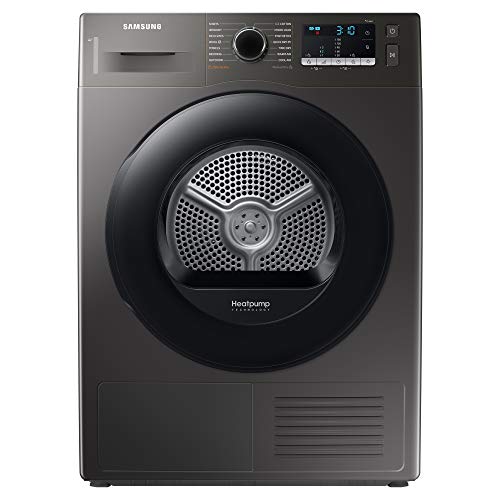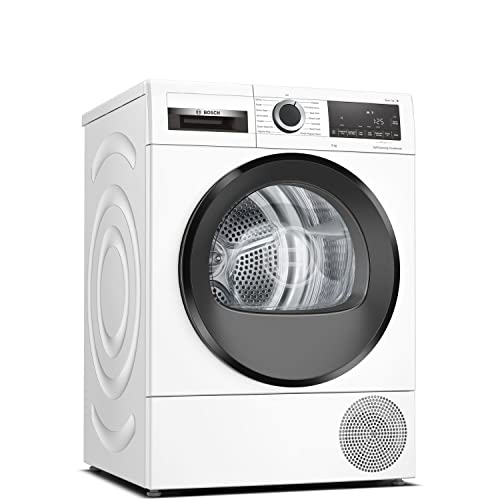Web Banner You'll Be Unable To Guess Heatpump Dryer's Tricks
페이지 정보
작성자 Dell 댓글 0건 조회 14회 작성일 24-06-03 01:01본문
 How to Properly Use a Heatpump Dryer
How to Properly Use a Heatpump DryerHeat pump dryers use electricity to transfer the water from the fabric into the compressor. The moisture is then dehumidified, then re-heated during the cycle to produce a low-temperature drying process.
ENERGY STAR lists several 4-cubic-foot heat pump dryer models that are smaller than traditional American standard-sized dryers (which typically have seven cubic feet). The smaller sizes are less bulky and may be eligible for rebates in some states.
Energy Efficiency
Energy efficiency is an important feature of the heatpump dryer. It uses ambient air energy to dry clothes and doesn't generate waste heat like traditional dryers. In the end, heatpump dryers can help homeowners save up to $600 in energy costs over the life of the appliance. They also have a lower environmental impact than traditional dryers, thanks to their use of renewable resources.
The energy efficiency of a heatpump dryer is determined by the COP (coefficient of performance) of the unit which is the ratio of its cooling capacity to the power consumption. The higher the COP the more efficient the heatpump. This is why heatpump dryers have a much lower kilowatts consumed per hour than conventional dryers heat pump.
The low temperature of the heat pump dryer decreases the drying time as well as the energy consumption. This is due to the system's ability to dehumidify increases. Jia et al. (1993) tested a combined heat pump and microwave dryer with a loop thermosyphon for low temperature grain drying and discovered that the system used less than 2.1 MJ per kg water removed.
Heat pumps can be used in conjunction with other drying methods to increase energy efficiency. As an example atmospheric freezing can be coupled with a heating pump to produce more efficient processes than vacuum freezing and to produce products that are similar to those made using vacuum freeze-drying (Bantle et al. 2009).
Although the initial cost of a heatpump dryer may be higher than that of conventional dryers, many rebate programs offer incentives for buying these appliances. For instance the IRA's Energy Star program provides rebates to homeowners who have cut their whole-home energy usage by 35 percent or more. This helps to make the initial cost of a heatpump dryer more affordable for families with limited budgets.
For those looking for the most efficiency in energy usage, a high-efficiency heatpump dryer is a good option. It is estimated that a heatpump dryer can reduce energy consumption by more than 40% when compared with traditional dryers which makes it one of the most efficient methods of drying clothes at home.
Convenience
While the heat pump dryers are relatively new to the United States, they're gaining popularity due to their energy efficiency and climate benefits. They are also gentler on clothing, because they dry at lower temperatures and have moisture sensors to prevent overheating. These features can help reduce shrinkage and damage to clothing, making them more cost-effective than traditional electric dryers.
The closed-loop system heat pump dryers employ to capture moisture and recycle air is what distinguishes them from conventional models. Instead of heating the air and then dumping it into the air via exhaust vents heat pump dryers make use of a refrigerant and compressor to recycle the air and capture excess humidity.
The process is similar in reverse to that of a refrigerator: the compressor heats up the air, then transfers it to an evaporator that is cold. The water vapor condenses in a pan. The dry air is circulated back into the drum, while the excess moisture is disposed of into a drain pan. The condensation drain hose connects to the sewer line of your home and eliminates the necessity for an exhaust vent in the majority of instances.
The heat pump dryers cut down on energy costs and are quieter. Some models even offer sound-dampening technologies for Heatpump Dryer added convenience. They are also easier to maintain than traditional dryers. They have fewer parts and are less likely to break because they don't need a vent. They don't need a gas line, like vented dryers. This can be costly to replace or fix.
The only drawback to convenience is that heat pump dryers generally take longer to dry than traditional models. This is due to the fact that heat dryers operate at lower temperatures and may require multiple cycles to dry the laundry. This is compensated by reducing the energy consumption or using energy efficient modes.
The Miele T1 heat pump dryer, for instance, saves up to 60% of energy usage and has a low noise level due to its vibration reduction system. It also comes with smart features, such as EcoDry or PerfectDry that analyzes the calcium content in your water to ensure safe and consistent drying. The dryer is Wi-Fi compatible and can be controlled remotely via a smartphone application.
Easy Installation
A heat pump dryer utilizes an air compressor to transfer heat from air into the laundry. It also doesn't need vents, which means it can be put in practically anywhere in your home. This makes it a great choice for tiny homes and accessory dwelling units (e.g. an apartment above the garage) and additions. You can stack a heating dryer and washer to reduce space.
The main disadvantage of this kind of dryer is that it takes longer to dry a load than a conventional vented dryer. It is less energy-intensive, and it doesn't emit any unpleasant odors. It also reduces the amount of laundry to wash and will help keep your clothes looking newer for longer.
Most brands of heat pump dryers are available in small sizes, which make them a breeze to install in small and tight homes. If you're looking for a dryer that is larger, you should choose an energy star-certified heat unit with a larger drum. Heat pump dryers can be equipped with an infrared heating element, which accelerates the drying process.
The first step in installing a heat pump dryer is to prepare the area where you'll be placing it. To ensure adequate ventilation, eliminate any clutter from the area and make sure to block off the area around the dryer. Then, you must prepare the power outlet, making sure that it is only for this appliance. Make sure whether the amps and voltage are the same as what is stated in your user manual. Connect the dryer to an outlet that is powered by electricity and run a short test cycle. Lastly, clean the lint filters after each use, and check and clean the exhaust hose to avoid blockages and maintain the performance.
To maximize the performance of your heat pump dryer, make sure you follow the manufacturer's guidelines for the size of the load and temperature settings. By doing this, you will enable your dryer to run efficiently and reduce excess energy consumption. To ensure that everything is running correctly, it's essential to make an appointment for a regular maintenance visit with a qualified technician. They can also examine your ductwork for obstructions or damage that may be affecting efficiency.
Maintenance
When properly utilized When used correctly, heat pump dryers are an investment that is worth the home. To keep them working optimally and efficiently all year round, they need regular maintenance, cleaning and checkups. Implementing these suggestions and incorporating them into your regular routine can help prolong the life of your dryer as well as reduce the energy use, allowing you to save money.
One of the most important maintenance requirements is keeping the condenser drain and the lint filter clear of blockages. To avoid clogging and a decrease in performance, the lint filters must be cleaned after each use. Check the vent hose regularly for any kinks or blockages. A blocked vent can result in increased drying times and is a significant fire risk. It is recommended to remove and clean the vent hose frequently with a dryer lint cleaner or the attachment for a vacuum cleaner to ensure it is thoroughly cleaned, getting rid of any trace of lint or debris.
Cleaning the heat exchanger regularly is also important. The component is responsible for transferring heat to clothes from the air. It will eventually become blocked with lint, resulting in a decrease in efficiency and shorter cycles. The user's manual of your dryer will give you specific instructions on how to clean the heat exchanger. After cleaning the heat exchanger, be sure to wash and dry it completely prior to reinstalling it in your dryer.
Install the dryer in an area that is well-ventilated, and away from obstructions like walls and other obstacles. This helps to maintain adequate airflow around the dryer, which will ensure proper operation and avoids overheating.
Lastly, you should regularly clean the exterior of the dryer and drum. This helps to prevent staining and keeps the interior of the dryer free from dust, dirt and dirt. Use a damp cloth and mild detergent to wash the exterior of the dryer. Avoid using abrasive cleaners because they can damage the surface.
It is recommended that in addition to these guidelines, you seek professional maintenance for your heat-pump dryer at least once per year. A professional can assess and clean your dryer's inner components, and ensure that all parts are in good shape.

댓글목록
등록된 댓글이 없습니다.
